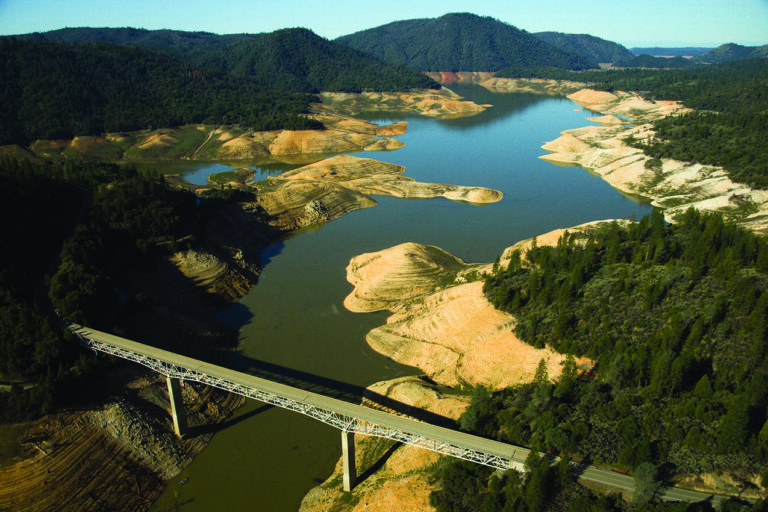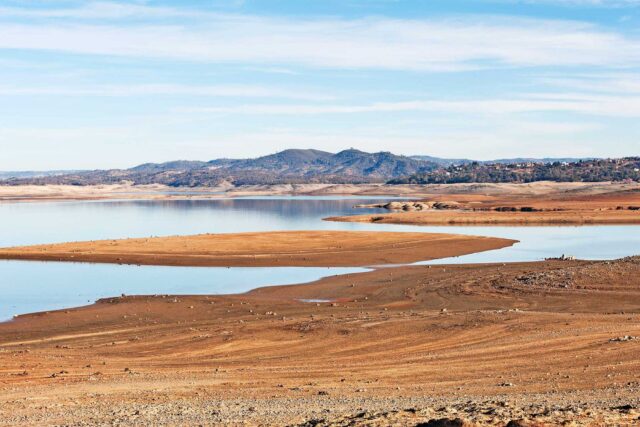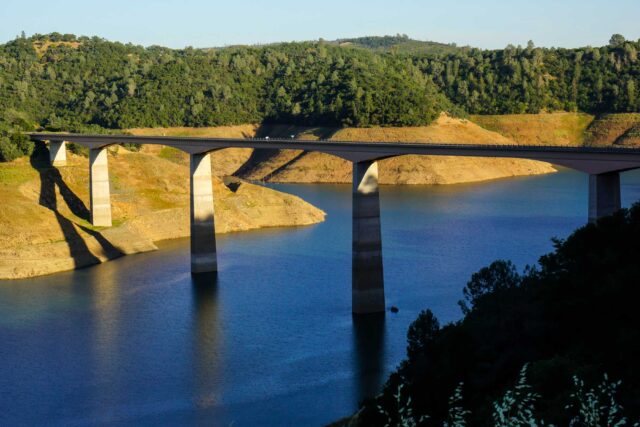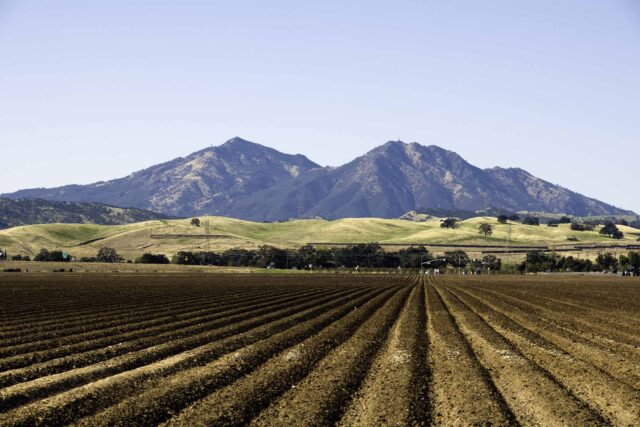- California is prone to droughts.
California has the nation’s most variable climate, and droughts are a recurring feature. Very wet and very dry years are both common, while “normal” years—widely used to describe average precipitation—are rare. Yet one dry year does not constitute a drought. Water stored in the state’s reservoirs and groundwater basins protect against individual dry years. Droughts occur when two or more successive years are very dry, and reservoirs and groundwater reserves are depleted. Significant recent droughts occurred in 1976‒77, 1987‒92, 2007‒09, and 2012‒16. - Climate change is making droughts more intense.
The past two decades have been exceptionally warm and dry, and included the hottest drought (2012‒16) in the state’s recorded history. Warming is making droughts more intense. A “thirstier” atmosphere—a direct consequence of warming—increases evaporation, which reduces water availability for ecosystems and human uses. Warming is also decreasing the proportion of precipitation that falls as snow. Snowpack is an important part of the state’s water storage system, accounting for about 30% of water supply. “Snow droughts” make it harder to manage reservoirs for water supply and hydropower generation.
Droughts are a recurring feature of California’s climate. Warming is making them worse.
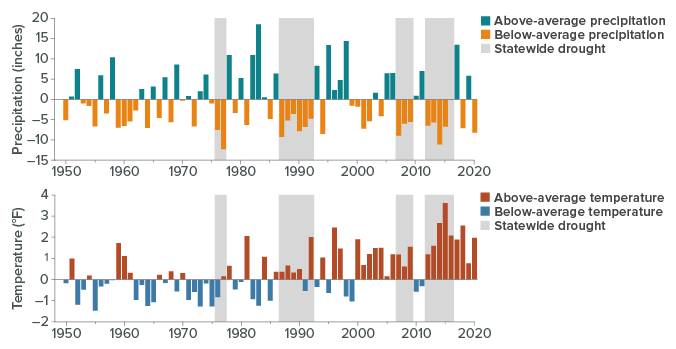
SOURCE: Western Regional Climate Center California Climate Tracker, DWR California’s Most Significant Droughts.
NOTES: Averages are calculated for 1950‒2000. Average statewide precipitation is 24.3 inches, and average temperature is 57.2 (F).
- Most cities are well-prepared for droughts . . .
The state’s large urban areas have made major investments in improving drought resilience by diversifying their supply sources—including water reuse, recycling, and stormwater capture—and expanding conservation efforts. Because of this, urban areas often experience drought impacts later than other sectors. Although California has added almost 10 million people since 1990, the amount of water used in cities has remained roughly the same. Reductions in water use were significant during the 2012‒16 drought, and while per-capita water use bounced back slightly, it has remained lower than pre-drought levels. - . . . but many small communities are vulnerable.
Across California, small rural communities—many of them communities of color—are ill-prepared to manage drought, often due to financial constraints. Communities that rely on shallow wells are especially vulnerable to dry conditions and regional groundwater over-pumping. During the 2012‒16 drought, at least 2,600 well-dependent households experienced water shortages, and roughly 150 small water systems needed emergency assistance. Steps are underway to improve drought planning for small communities, to better anticipate problems. - Agriculture faces significant challenges from increasing drought intensity.
Many farmers rely on groundwater to get them through droughts, but historical over-pumping has depleted these supplies. State law now requires sustainable management of groundwater over time. While increasing surface supplies and groundwater recharge will help, achieving sustainability will require reductions in demand, principally through land fallowing. Achieving sustainability may require permanent fallowing of more than 500,000 acres of farmland. Growing drought intensity increases demand for groundwater and reduces recharge opportunities, making it more difficult to bring groundwater basins into balance.
Water storage is key to managing droughts, but unsustainable use has depleted groundwater.
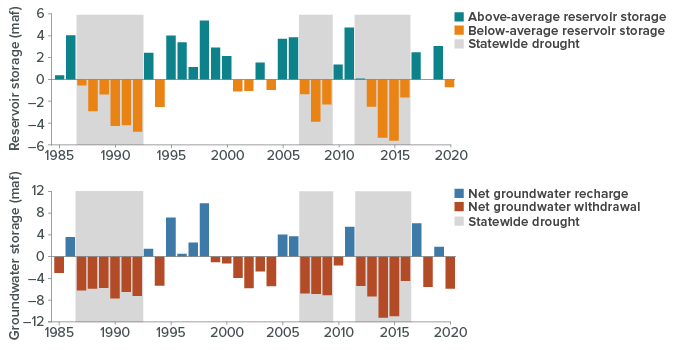
SOURCE: Author estimates using DWR California Data Exchange, DWR C2VSimFG, DWR California’s Most Significant Droughts.
NOTES: For reservoir storage, the figure shows the difference between water stored at the end of the water year in 11 major Central Valley reservoirs, and the average values over the 1985‒2020 period. For groundwater storage, it shows year-over-year changes in the Central Valley, using C2VSim for 1985‒2015 and a regression analysis for 2016‒20.
- Droughts make it harder to manage the environment.
The state’s rivers, wetlands, and forests—which serve as natural water-management infrastructure—are in decline. Drought stress is making these ecosystems more vulnerable. Today, more than 240 freshwater species found in California are either endangered or vulnerable to extinction. Protection of these species often leads to conflicts over water management. Historical management practices in headwater forests, coupled with increasing drought intensity, have left many forests unhealthy and marred by disease and die-offs. Extreme wildfires, such as the record fires in 2020, are likely to increase in the future. The state needs to restore the health of its natural infrastructure while also improving its resilience to warmer and drier droughts.
